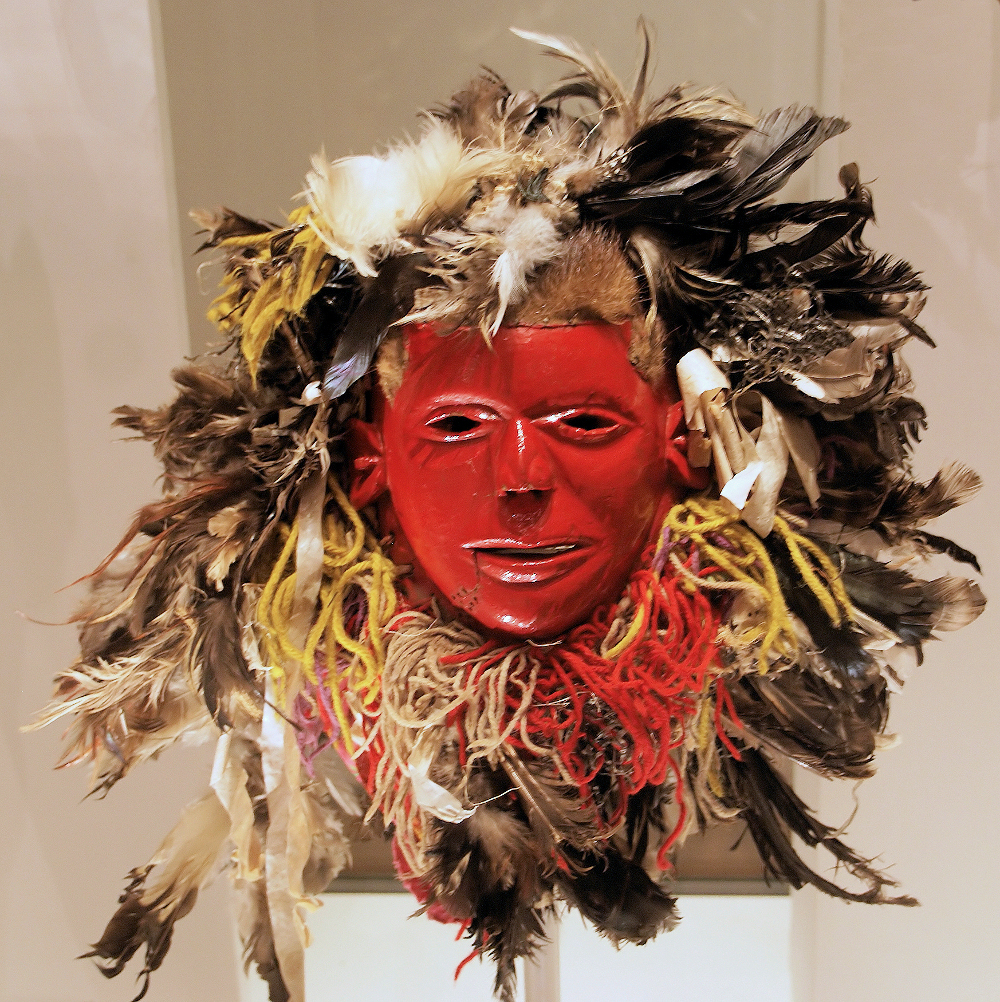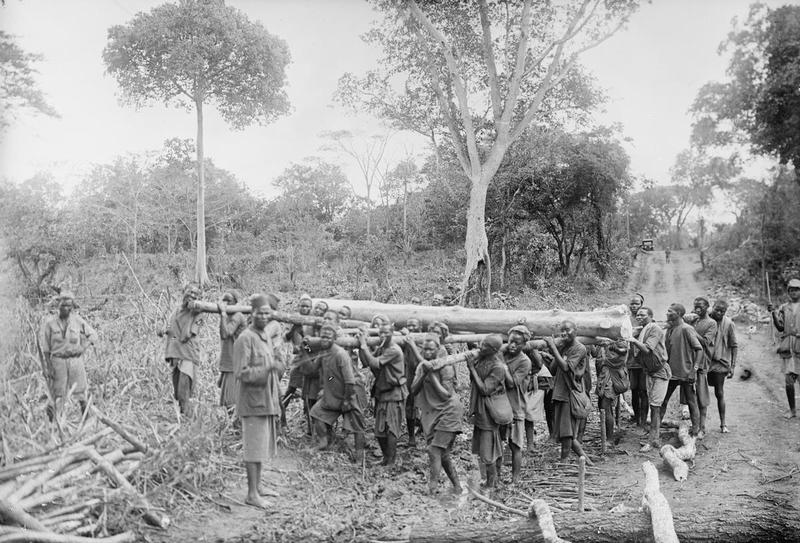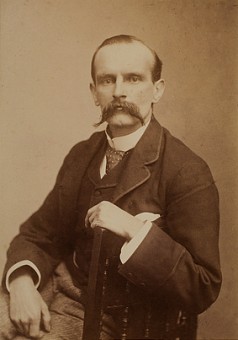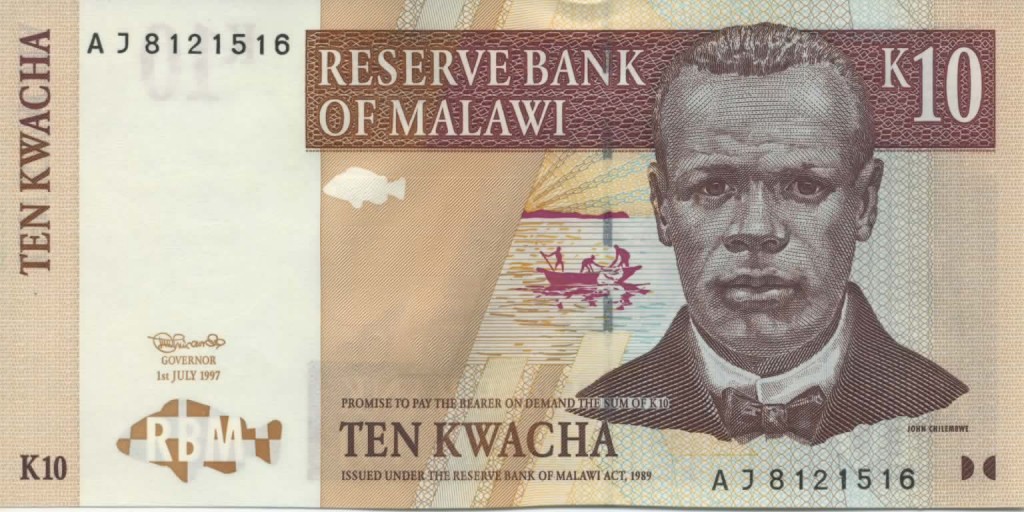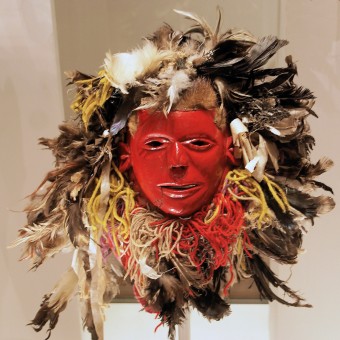The British must have been very pleased when he was finally apprehended. Desperate to find him, they had placed his friends and family under surveilliance and – after six weeks of unsuccessful hunting – had even offered a substantial reward for his capture.
Like many other Muslims in the north of Nigeria he opposed fighting in the First World War for fear that he might be deployed against his fellow Muslims in the Ottoman Empire.
A Sergeant in Britain’s colonial army, he had persuaded at least twenty other soldiers to join him and then deserted.
But after over four months on the run Tanko Kura – one of the very few African opponents of the war whose name we know – had finally been captured. [2]
Imperial ironies, hidden resistance
One of the ‘chief ironies’ of imperialism’, notes historian Glenford Delroy Howe, is that during the First World War people ‘[t]hroughout the colonial world … were called upon and many even eagerly volunteered to defend the very nations and institutions which kept them in subjugation and robbed them of their identities’. [3]
India alone contributed over one million men (all volunteers), while over 2 million Africans served as soldiers and labourers. [4]
But there was also opposition and resistance to the War and its horrors by people in what is today called the Global South, as well as from the ‘fourth world’ of indigenous peoples. [5]
Sometimes it was violent, sometimes nonviolent. Unsurprisingly, it took place in widely-differing contexts and was seldom ‘purely’ about the war.
Here we briefly survey a small number of examples from within the British empire, mostly from Africa – a few scattered fragments of a history that has still to be written. [6]
‘Who cares about native carriers?’
Britain ‘recruited’ over a million African ‘carriers’ during the war from within its own colonies as well as in German East Africa. Of these no fewer than 95,000 died from all causes including malnutrition, disease and overwork – almost twice the number of Australian or Canadian troops who died during the War. [7]
Among East and West African carriers the death rate was 20% [8] – almost double the 11.5% death rate for British soldiers. [9] One Colonial Office official explained that the East Africa campaign ‘only stopped short of a scandal because the people who suffered most were the carriers – and after all, who cares about native carriers?’ [10]
But even the carrier deaths were only the tip of the iceberg.
During its East Africa campaign British forces maintained themselves ‘partly or sometimes wholly by the routine pillage of peasant settlements in their path. To deny sustenance to ravenous German units operating in the vicinity, villages were blasted and burned, leaving fields torched and livestock scattered.’ [11]
Moreover, a majority of the adult men in the British territories bordering German East Africa had been coerced into manning Britain’s supply lines. [12] Alongside impressment by German forces this produced a manpower drain unparalleled since the 1870s, when Arab slavers had transported tens of thousands of Africans to the Middle East. [13]
The result was a ‘severe impairment of the capacity for survival of those left behind’, notes historian Edward Paice. [14] And the failure of the rains in late 1917 and early 1918 compounded this dire situation, leading to famine conditions.
‘Carriers must be impressed’
Recruitment was a contemporary euphemism for forced labour. [15]
Indeed, as early as 1914, the blood-soaked Governor-General of the Colony and Protectorate of Nigeria, Frederick Lugard – who in 1906 had sent a 500-man column to ‘annihilate’ the Nigerian village of Satiru, killing 2,000 people [16] – ordered that ‘if the emergency is great, carriers must be impressed’. [17]
Nwose, recruited in Eastern Nigeria in 1914, told how: ‘We came back one night from our yam farm, the chief called us and handed us over to [the] government messenger. I did not know where we were going to, but the chief and the messenger said that the white man had sent for us and so we must go. After three days we reached the white man’s compound …The white man wrote our names in a book, tied a brass ticket number round our neck and gave each man a blanket and food. Then he told us that we were going to the great war … The government police led the way, and allowed no man to stay behind.’ [18]
In Nyasaland (today’s Malawi) chiefs were threatened with removal from office, and sometimes whipped if they failed to produce sufficient numbers of men. [19] ‘Recruiters’, in their turn, often used violence to impress people. ‘There was terror everywhere’, Chief Malagengachanzi – a youth at the time – later recalled, ‘slavery was the actual way people were taken to war’. [20]
‘A terror to all people’
Sometimes ‘recruitment’ was resisted violently, but these uprisings were usually swiftly repressed using extreme violence.
The best-known revolt took place in Nyasaland and was led by a Western-educated missionary, John Chilembwe.
Nyasaland had a reputation as the ‘Cinderella’ of the British protectorates, but the reality was very different. Lewis Bandawe, a migrant from Portgual’s notoriously brutal rule in Portuguese East Africa (today’s Mozambique), found the British authorities in Nyasaland little better, describing them as ‘a terror to all people’. [21]
‘A cause that is not theirs’
Spurred by the conscription of Nyasaland Africans to fight in the war, Chilembwe wrote a famous letter of protest to the Nyasaland Times (which they refused to publish) declaring:
‘Let the rich men, bankers, titled men, storekeepers, farmers and landlords go to war and get shot. Instead, we the poor Africans, who have nothing to own in this present world, who in death, leave only a long line of widows and orphans in utter want and dire distress, are invited to die for a cause which is not theirs.’ [22]
In January 1915 he and 200 of his congregants launched simultaneous attacks on the headquarters of the African Lakes Company in Blantyre and a nearby European plantation. [23]
A brutal plantation manager named William Jervis Livingston, who had destroyed several of the mission’s churches, was killed but, on orders from Chilembwe, women and children were spared. [24]
The rising was quickly suppressed, and over 40 rebels tried and executed, their bodies left to hang in the sun as a warning to others. [25]
‘Our women curse and spit at us’
Resistance also took nonviolent forms.
In Nigeria one of the most effective ways of avoiding military service was to flee into French or German territory, and similar tactics were adopted in the Gold Coast (today’s Ghana). [26]
Throughout Nyasaland, men fled into the bush to avoid being impressed as laborers. Those caught could be brutally whipped. ‘I escaped and hid in a river and my parents, since I had not married yet, secretly brought food to me,’ Vmande Kaombe later recalled. ‘They were [asked about my absence] but they said they did not know what had become of me.’ [27]
In South Africa (a British dominion) the superintendent of Native Affairs in East London bemoaned the fact that when ‘recruiting meetings were in the air’ Africans ‘deliberately absented themselves and made into the bush’ [28], while a speaker at a recruitment meeting in Pretoria complained that:
‘When we speak of joining the overseas contingent our women curse and spit at us, asking us whether the Government, for whom we propose to risk our lives, is not the one which sends the police to our houses at night to pull us and our daughters out of bed and trample upon us.’ [29]
Safe havens
In some places African elites collaborated with the British. For example, in Nigeria the brutal Emir of Zaria – who was known to indulge in slaving – became one of Britain’s best sources of troops and carriers. [30]
However, elsewhere local elites sided with the resisters rather than the British.
In South Africa chiefs would sometimes feign an interest in recruiting while covertly acting to thwart it. [31] In Nigeria, in Zungeru and along the Cross river, chiefs simply refused to supply any carriers, while the people of Bende Ofufa – a section of the Ikot Ekpene district of south-eastern Nigeria – renounced all alien control, refusing to obey summonses or allow arrests, and the area became a safe haven for those on the run. [32]
Such refusal was not risk-free though. One of the sparks for an August 1914 uprising in Egbaland in Nigeria was the arrest, humiliation and torture of an elderly chief, Shobiyi Ponlade, after the latter failed to order his people to construct and repair roads in his area without pay. Forced to remain prostrate in the sun outside the British Commissioner’s house for a prolonged period, he was then beaten and left tied to a tree overnight. Subsequently imprisoned, he was dead within a fortnight. [33]
Passive resistance
Once recruited, a range of strategies still remained for the resister, including desertion.
In South Africa, the authorities were forced to take action when it became clear that the number of recruits arriving at the Cape Town mobilisation camp did not tally with the numbers despatched thither. [34] In the Gold Coast over 10% of soldiers deserted. [35]
In Nigeria passive resistance techniques were also adopted, including hiding in the bush, malingering, discarding loads, feigning sickness and purposely misunderstanding orders. [36]
Cultural resistance
In some places, indigenous religious and cultural practices were drawn upon. For example, in the central region of Nyasaland, the secret religious group known as nyau became the focal point for resistance to forced military labour.
Members would flee recruiters to hide in caves or graveyards connected with the the group’s rituals – or hide in their own small hole in the bush, known as a machemba, and don animal masks connected with nyau. They knew that many recruiters were nyau members, that the group’s vows required members to aid each other, and that failure to do so could result in the recruiters being brought before a special nyau court. [37] In Dedza district – where nyau activity was especially strong during the war – the percentage of the adult male population forced into military labor service was well below the national average. [38]
Out of Africa
Resistance to the war and recruitment also took place in the West Indies, among the Waikato tribal confederation in New Zealand and amongst indigenous people in the US and Canada.
Sometimes, the latter were even able to find allies among the settler population. For example, on the Sarcee Reserve in Alberta the government represenative responsible for implementing federal Indian policy was so disgusted with government regulations conscripting men from the Reserve that he ‘registered all eligible men only to exempt them, citing a fictitious outbreak of tuberculosis in the paperwork submitted to his superiors in Ottawa.’ [39]
Resisting Empire’s call
In 2013, launching the government’s ‘flagship programme … reveal[ing] the crucial contribution of the Commonwealth countries during the First World War’, David Cameron declared that ‘[i]n battlefields across the world today are the graves of people of all faiths and people of no faith, side by side. They fought together, they fell together, and together they defended the freedoms we enjoy today.’ [40]
Sergeant Tanko Kura was finally captured, but the following month he escaped again – this time, it seems, permanently.
In these centenary years, the Government’s dishonest framing of the grotesque realities of imperial history should be a spur to all of us to try and recover the stories of those like Sergeant Kura, Te Puea and countless unnamed others across the globe who resisted Empire’s call.
This article first appeared in the December 2014 / January 2015 issue of Peace News.
NOTES
[1] Albert Grundlingh, Fighting their own war: South African Blacks and the first World War, Ravan Press, 1987. p. 70.
[2] James K. Matthews, ‘Reluctant Allies: Nigerian Responses to Military Recruitment 1914 – 1918’, p. 107 – 108 in Melvin E. Page (ed), Africa and the First World War, MacMillan Press, 1987.
[3] Glenford Delroy Howe, Race, War and Nationalism: A Social History of West Indians in the First World War, Ian Randle Publishers, 2002, p. xii.
[4] Stephen Garton, ‘The Dominions, Ireland, and India’, p. 155, in Robert Gerwarth & Erez Manela (eds), Empires at War: 1911 – 1923, Oxford University Press, 2014; Melvin E. Page (ed), Africa and the First World War, MacMillan Press, 1987, p. 14.
[5] Our, perhaps somewhat idiosyncratic, criteria for inclusion are as follows: (1) that the actions were taken by people from what would today be termed the Global South or the fourth world; and (2) that these actions were directly related to either the war or its horrors. Thus, resistance to recruitment in Africa is included, but the 1918 anti-conscription campaign in Ireland and the Ghadarite uprising in India are out (as they fail to meet criteria (1) and (2) respectively).We do not apply any criteria involving pacifism or the use of violence. Of course, the boundaries of the Global South – which is usually taken to comprise Africa, Central and South America and large parts of Asia – are disputed, as are the concept’s utility as an analytic tool. What exactly consitutes ‘the war’ is also debateable. Thus, Robert Gerwarth and Erez Manela have persuasively argued that Italy’s 1911 attack on Libya (then part of the Ottoman Empire) and the end of the Franco-Belgian occupation of the Ruhr [in 1925] might provide a more useful periodisation than the standard August 1914 – November 1918 one (Gerwarth & Manela [eds], op. cit., p. 2). Nonetheless, here we adopt the standard time frame for the war.
[6] Opposition was not, of course, confined to the British Empire. For example, the 1917 rebellion along the Zambezi river in Portuguese East Africa (today’s Mozambique) ‘was caused by excessive taxation and the ever greater recruitment of men: to work on road projects … and as porters for the war effort’. The latter ‘were seized and dispatched in chains to Quelimane, and thence to the north’ by Britain’s Portuguese ally, ‘amid scenes of great violence’. ‘The ensuing struggle has been described as the last great slave campaign in Africa’, with the Portuguese permitting its African auxillaries, brought in from the nearby district of Angonia, ‘to keep all the booty they could carry, including women and children.’ (Filepe Ribeiro de Meneses, ‘The Portuguese Empire’, pp. 188 – 189, in Gerwarth & Manela [eds], op. cit.). Likewise, the introduction of conscription was the trigger for ‘an openly anti-colonial civil war’ in Central Asia in the summer of 1916 (Joshua Sanborn, ‘The Russian Empire’, p.100, in Gerwarth & Manela, op. cit.), while French recruitment practices in West Africa generated both violent and passive resistance (Richard S. Fogarty, ‘The French Empire’, pp. 122-123, in Gerwarth & Manela [eds], op. cit.). As for Gernmany, Edward Paice argues that, though ‘[r]ebellion simmered in the Makonde Highlands in the south-east [of German East Africa] through to 1917’, no Chilembwe-style uprising occurred because of the extreme brutality with which Germany had established its control there in the first decade of the century (Edward Paice, Tip and Run: The Untold Tragedy of the Great War in Africa, Orion, 2006, pp. 164-165).
[7] Edward Paice, op. cit., p. 392.
[8] Hew Strachan, The First World War: A New Illustrated History, Simon and Schuster, 2003, p. 83. According to Strachan, the daily ration for an East African porter in 1917 was less than 1,000 calories a day.
[9] ‘Viewpoint: 10 big myths about World War One debunked’, BBC News Magazine, 25 February 2014, http://www.bbc.co.uk/news/magazine-25776836.
[10] Paice, op.cit., p. 393.
[11] Bill Nasson, ‘British Imperial Africa’, p. 146-147, in Gerwarth & Manela, op. cit.
[12] Paice, op. cit., p. 392.
[13] Ibid., p. 394.
[14] Ibid.
[15] Matthews, op. cit., p. 96. Matthews notes that ‘the majority of [Nigerian] chiefs who complied with recruitment demands probably did so under duress’ and that ‘the colony’s highest officials supported these methods’ (ibid., p. 98). According to David Killingray colonial officials in the Gold Coast ‘were fully aware that compulsion was widespread and that most recruits were not voluntary enlistments’ (David Killingray, ‘Military and Labour Politics in the Gold Coast’, p. 162 in Page, op. cit.). Writing about the East Africa campaign, Edward Paice claims that ‘In the first two years of the war service as a military carrier was voluntary, short-term and remunerated nearly as well as service as an askari [soldier] in the King’s African Rifles. But as the theatre of war and number of troops expanded, carriers’ pay was cut to a pittance and recruitment became in effect by force.’ (http://www.africaresearchinstitute.org/publications/counterpoints/how-the-great-war-razed-east-africa). Whatever the merits of the first part of this claim, it certainly didn’t apply to Britain’s African colonies as a whole. Indeed, by the time the war began the ‘military authorities in British West Africa’ already ‘had considerable experience in … forced labour’ (Matthews, op.cit., p.96), and once the war began, forced recruitment for it took place in Nigeria as early as 1914 (ibid., p. 97).
[16] Thomas Pakenham, The Scramble for Africa, Abacus, 2001, pp. 651-652. Lugard ‘became a hero and was granted a peerage’ for his work in Nigeria (Toyin Falola, Colonialism and Violence in Nigeria, Indiana University Press, 2009, p. 19).
[17] Matthews, op. cit., p. 98.
[18] Ibid., p. 97.
[19] Melvin Page, The Chiwaya War: Malawians and the First World War, Westview, 2000, p. 47.
[20] Page, op. cit., pp. 49 – 50. By 1917 the need for carriers in Nyasaland had become so pressing that the British resorted to tactics that ‘seemed to the Africans more like practices they associated with the slave trade which colonialism was supposed to have ended’: recruiting parties would raid villages at night, going house to house, rousing the inhabitants and ‘captur[ing] any adult males found inside. These men would then be bound with ropes or even wooden yokes and marched off for service’ (ibid., p. 48).
[21] Paice, op. cit., pp.161 – 162. According to Bandawe, ‘[E]very African was obliged to take off his hat for any European, whether government or not … [and] every European, with the exception of the missionaries had a chikoti – a whip made of hippo’s hide – which he used on his domestic servants or labourers’. Britain’s African police force ‘were pure barbarians, and would do brutality on the villagers, yet [were] allowed … to trouble the villagers as much as they could.’
[22] Philip Briggs & Mary-Anne Bartlett, Malawi, Bradt Travel Guides, 2006, p. 13.
[23] ‘There can be no doubt … that the coming of the Great War, and most especially the demands for men, was a major factor in prompting the uprising.’ (Page, op. cit., p.39). Moreover, although Chilembwe’s unpublished letter to the Nyasaland Times focuses on military recruitment (those ‘invited to die for a cause that is not theirs’) ‘there is little doubt that the demands for carriers greatly distressed him as well’, and that ‘it was carrier recruitment which was the most important war demand in the Chiradzulu sub-district around his Providence Industrial Mission’ (ibid., p.40). Indeed, ‘[m]en close to Chilembwe and the [Mission] well remember how the European war and the demands for African manpower weighed heavily on those who participated in planning the rebellion.’ (ibid.)
[24] Timothy Stapleton, ‘Chilembwe, John’ in The Oxford Encyclopedia of African Thought, vol. 2, p. 224.
[25] Paice, op. cit., p. 163.
[26] Matthews, op. cit., p. 100; Killingray, op.cit., p.161. Such tactics were also employed by Africans from non-British colonies eg. Toyin Falola notes that during the First World War deserters from forced recruitment in Dahomey (then a French colony) ‘set up a colony for refugees at the border town of Ijofin on the Nigerian side’ (Falola, op. cit., p. 90).
[27] Page, op. cit., p. 50.
[28] Grundlingh, op. cit., p. 69.
[29] Ibid., p. 70.
[30] Matthews, op. cit., p. 97-98. However, according to Matthews ‘the majority of chiefs [in Nigeria] who complied wuth recruitment demands probably did so under duress’.
[31] Grundlingh, op.cit., p. 69.
[32] Matthews, op. cit., pp. 98, 104.
[33] Akinjide Osuntokun, Nigeria in the First World War, Longman, 1979, pp. 104 – 105. The uprising was put down ‘with rifles and a Maxim gun’, with the Colonial Office ‘term[ing] the result “a massacre”, as three dozen unarmed men and women had been killed’ (Matthews, op.cit., p. 102). An alleged assassination attempt on the British military officer sent to quell disorder in the city of Abeokuta was ‘the signal for a general fusillade upon a panicstricken and unarmed crowd’ in which a seventy-year-old-man, a twelve-year-old boy and 34 other people were killed (Osuntokun, op. cit., p. 107). ‘When his troops opened fire on the crowd, the British officer made no effort to check the killing of men and women who were in flight and who were offering no resistance’, and ‘soldiers entered the Oluwo’s [ie. king’s] house to shoot down people in their rooms’ (ibid., p. 108). The next day, with the town now largely deserted, the British officer and his men went about ‘destroying houses and collecting property.’ The Commissioner, P.V. Young, subsequently defended the massacre on the grounds that it was ‘a necessary and salutary lesson for them’ (ibid.). Mathews (op. cit., p. 102) lists ‘mass conscription of Egba for military duty and road work’ as one of the primary causes of the uprising, but its timing (the massacre itself took place on 8 August 1914) suggests that this was not directly related to the war – see Harry A. Gailey, Lugard and the Abeokuta Uprising: The Demise of Egba Independence, Routledge, 1982, p. 57 – 64.
[34] Grundlingh, op. cit., p. 69.
[35] Killingray, op. cit., p. 162.
[36] Matthews, op. cit., p. 103.
[37] Page, op. cit., pp. 50 – 51. The punishments meted out by such a court were probably a significant deterrent eg. trespassers in the places where the nyau congregated, or in which they stored their religious paraphernalia, ‘were likely to be subjected to severe punishments, which in Chewa and nyau custom originally included death’.
[38] Ibid., pp. 51-52. According to the 1918 adminstrative census 16.7% of adult males in Dedza were working as military labourers; the national average was 29.9% (ibid., p. 53).
[39] Timothy Wineguard, Indigenous Peoples of the British Dominions and the First World War, Cambridge University Press, 2011, pp. 153-154.
[40] ‘Commonwealth contribution to First World War to be commemorated’, Department for Communities and Local Government and The Rt Hon Baroness Warsi, 8 November 2013, https://www.gov.uk/government/news/commonwealth-contribution-to-first-world-war-to-be-commemorated.

